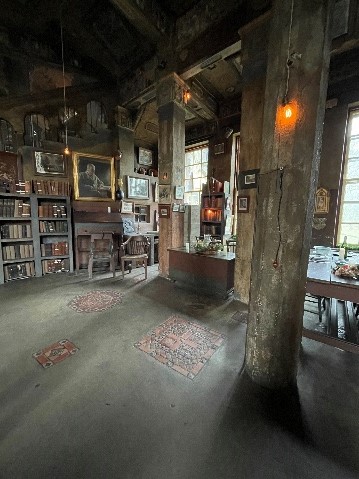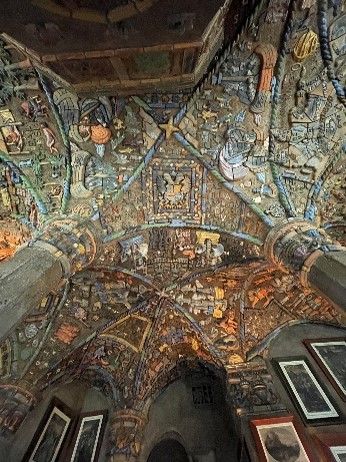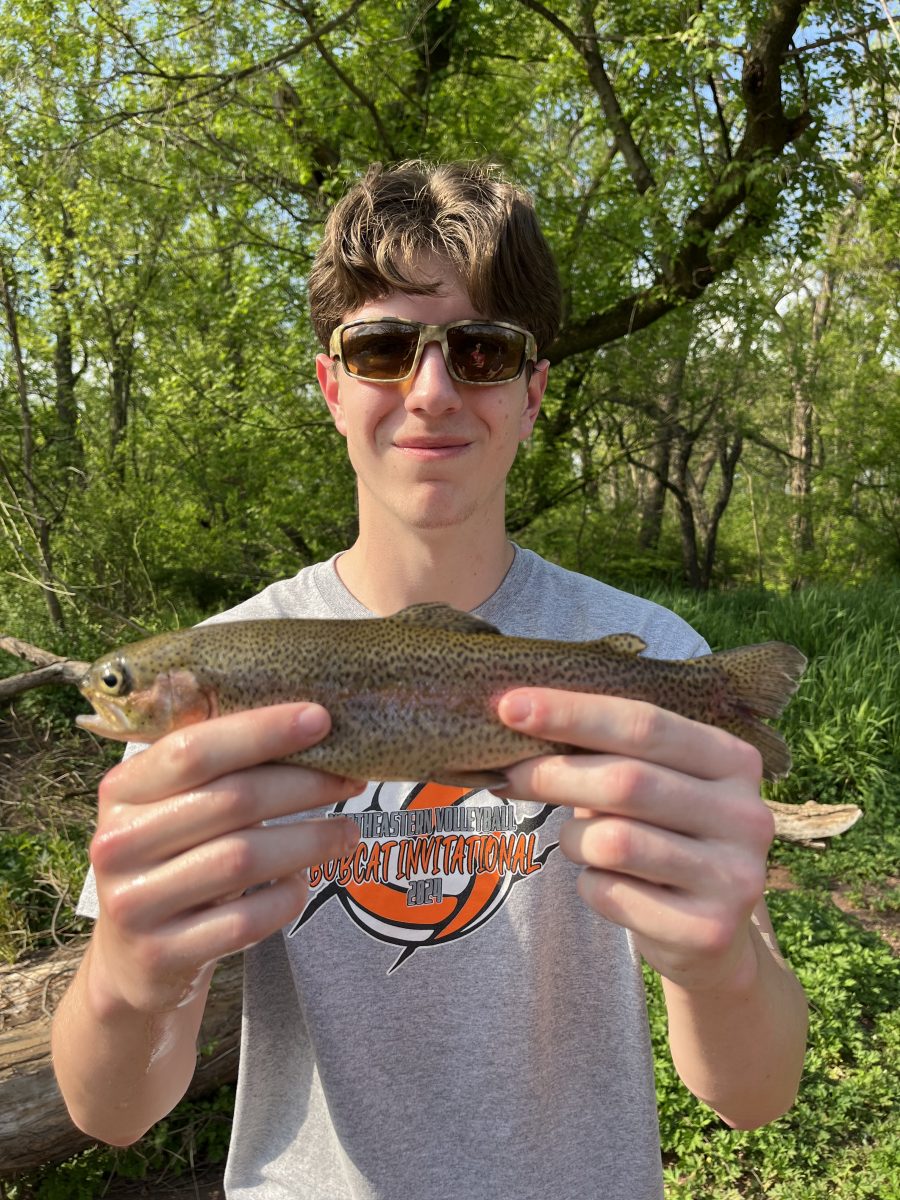Henry Chapman Mercer was many things – an artist, a writer, an archeologist, an anthropologist, and a ceramicist – but he was not an architect. However, that did not stop him from designing and overseeing the construction of a seven-story castle built on seven acres of land in Doylestown, Pennsylvania. Fonthill Castle was built from the inside out, with each room meticulously planned to be visually impressive and showcase Mercer’s extensive collection of tiles and prints. And he did it all with no prior experience.
Henry Mercer was born in 1856 to a prominent family from Doylestown, Pennsylvania. He took the first of many trips to Europe when he was 14 years old. Mercer had many interests, but travel was a constant throughout his life. He spent years in Eastern Europe and Central America, where he drew much of his inspiration for Fonthill Castle. In addition to traveling, Mercer had a hobby of collecting. His collections include tool artifacts, books, and tiles. His collection of tool artifacts, now displayed at the Mercer Museum in Doylestown, grew to include over 3,000 tools used for crafts trades, daily living, and on farms. Countless bookshelves throughout the castle display his collection of over 6,000 books. However, the most impressive of his collections are the tiles found on the castle’s walls, ceilings, and floors. Mercer became interested in pottery and discovered that Bucks County was a good location for clay. In 1898, he opened Moravian Pottery and Tile Works, where he handcrafted unique and popular tiles. These three collections demonstrated who Henry Mercer was and were the primary sources of inspiration for his home.

From the beginning, his intention for the castle was to create a home to live in that would become a museum after his death to showcase his tiles and prints. To design the castle, he began by constructing small clay models of each room, working from the inner rooms and moving outward. He then pressed the models together to create the final structure of the home. The finished product included 44 rooms, 32 stairwells, 18 fireplaces, and over 200 windows, each with a unique dimension. It featured narrow hallways leading to expansive, impressive rooms covered in tiles. The tiles illustrated books, biblical stories, historical events, and more. No blueprints were ever created for the castle because it was so personalized.
The construction of Fonthill Castle began in 1908 after Mercer inherited money from his aunt. He was 51 years old. He bought several adjoining properties – previously known as the Fisher Farm – for a total of seven acres of land. He studied different building materials and ultimately constructed the home using reinforced concrete because it was cheap, fireproof, easily molded, and a perfect medium to set tile. A team of 10 to 12 men worked onsite with the help of a horse named Lucy, who helped lift the castle’s walls. After lifting the walls, the workers faced the challenge of creating the ceilings in each room. The shape of the ceilings was unique because Mercer had simply pressed the clay models of each room together. First, they built wooden scaffolding at the top of the walls to the approximate shape of the ceiling. Next, they placed a layer of dirt on the scaffolding with sand on top of it. Then, Jacob Frank, a worker who made and set the ceiling tiles, placed each tile face down in the sand. After this process was complete, the workers could pour the concrete and brush away the dirt and sand to reveal the completed ceiling. The process was laborious, but the workers finally completed the construction of Fonthill Castle in 1912. Mercer kept meticulous records of his spending, and the total construction cost was $32,482, roughly $1 million in today’s currency. He also ensured that the castle had modern conveniences, including a freight elevator to carry building materials during construction, a dumbwaiter to bring food upstairs from the kitchen, radiators, and duct systems for warmth, bell systems to communicate with his housekeeper, and five phone lines.

Henry Mercer died at Fonthill Castle in 1930 at the age of 73. As he had always intended, the castle is now designated as a National Historic Landmark and officially recognized by the American Alliance of Museums. They also offer regular tours with knowledgeable staff who provide information and answer questions. Dave was a recent visitor at the castle who became interested after touring the Mercer Museum, also located in Doylestown. “The museum was kind of quirky, so I figured the castle would be that way too,” Dave explains. He references Mercer, saying he “…was brilliant but also very quirky. All of the antiques in [Fonthill] were pretty amazing.” Megan was also a visitor at Fonthill. She shares that she, too, was impressed by Mercer, particularly how detailed he was. “He researched everything and knew his own mind. He carried it through with extensive detail.” In her opinion, Fonthill is unique because Mercer “…brought his knowledge of the places he went and the cultures of those areas and created something out of it.” Both Megan and Dave stated that they enjoyed getting a look into Mercer’s life and the fascinating history of Fonthill Castle.
Henry Mercer was a knowledgeable individual and a man of many talents, and he used his many diverse experiences to create something new and inventive. With no architectural training, he built a home and museum that continues to educate and impress visitors over a century later.
Sources:
https://www.mercermuseum.org/about/fonthill-castle/
https://www.mercermuseum.org/wp-content/uploads/2014/10/Fact-Sheet-Henry-Mercer-1.pdf
https://www.mercermuseum.org/visit/fonthill-castle/plan-visit/
https://artistshomes.org/site/fonthill-castle
https://www.visitbuckscounty.com/things-to-do/museums-historic-sites/fonthill-castle/
Verbal information from Fonthill tour





